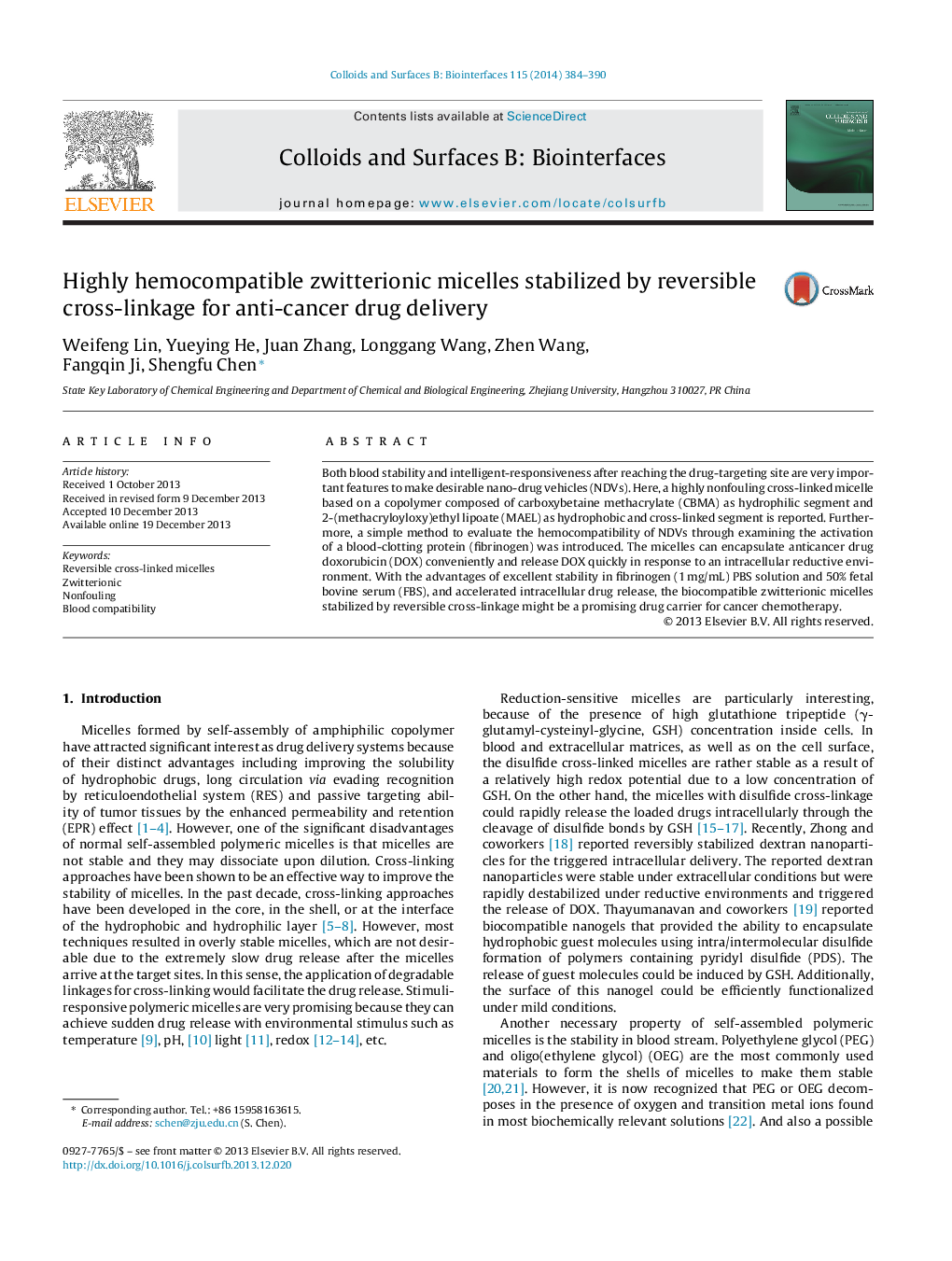| Article ID | Journal | Published Year | Pages | File Type |
|---|---|---|---|---|
| 599753 | Colloids and Surfaces B: Biointerfaces | 2014 | 7 Pages |
•Highly hemocompatible doxorubicin-loaded micelles with reversible cross-linkage were developed.•It is proved the effectiveness of zwitterionic carboxybetaine layer to resist nonspecific protein adsorption on nano drug vehicles (NDV).•The copolymers of two kind of monomers with large difference in hydrophobicity (carboxybetaine methacrylate vs 2-(methacryloyloxy)ethyl lipoate) were successfully prepared and used for drug encapsulation.•A simple method to pre-evaluate the hemocompatibility of NDV is developed.
Both blood stability and intelligent-responsiveness after reaching the drug-targeting site are very important features to make desirable nano-drug vehicles (NDVs). Here, a highly nonfouling cross-linked micelle based on a copolymer composed of carboxybetaine methacrylate (CBMA) as hydrophilic segment and 2-(methacryloyloxy)ethyl lipoate (MAEL) as hydrophobic and cross-linked segment is reported. Furthermore, a simple method to evaluate the hemocompatibility of NDVs through examining the activation of a blood-clotting protein (fibrinogen) was introduced. The micelles can encapsulate anticancer drug doxorubicin (DOX) conveniently and release DOX quickly in response to an intracellular reductive environment. With the advantages of excellent stability in fibrinogen (1 mg/mL) PBS solution and 50% fetal bovine serum (FBS), and accelerated intracellular drug release, the biocompatible zwitterionic micelles stabilized by reversible cross-linkage might be a promising drug carrier for cancer chemotherapy.
Graphical abstractFigure optionsDownload full-size imageDownload as PowerPoint slide
